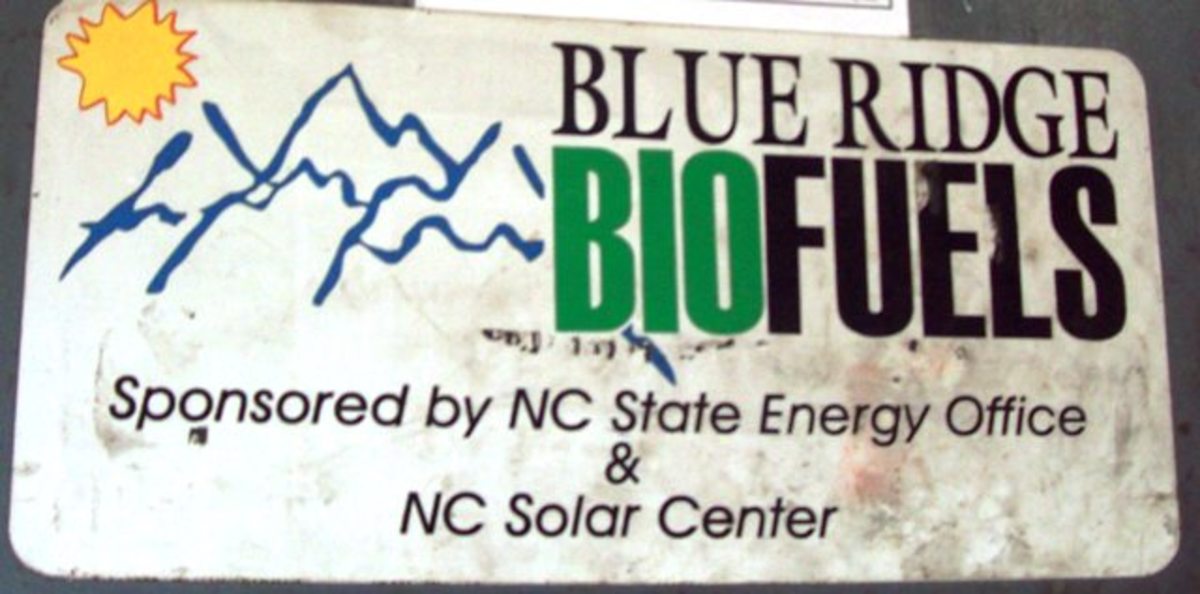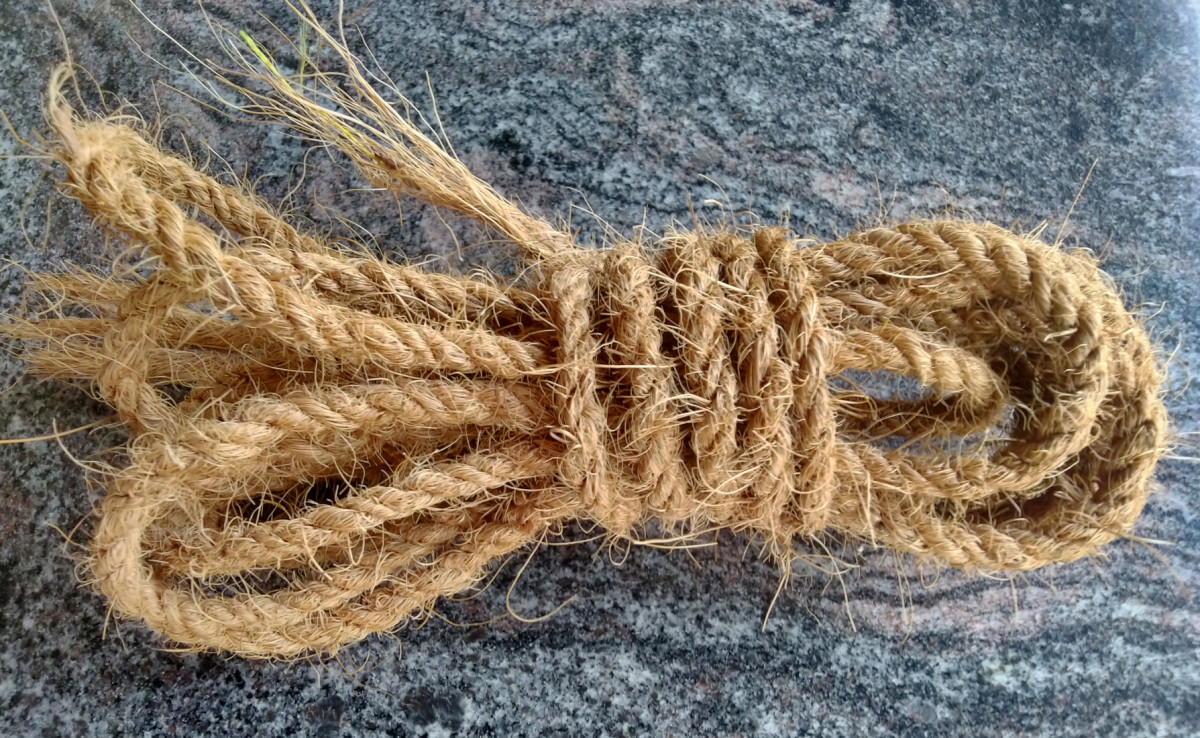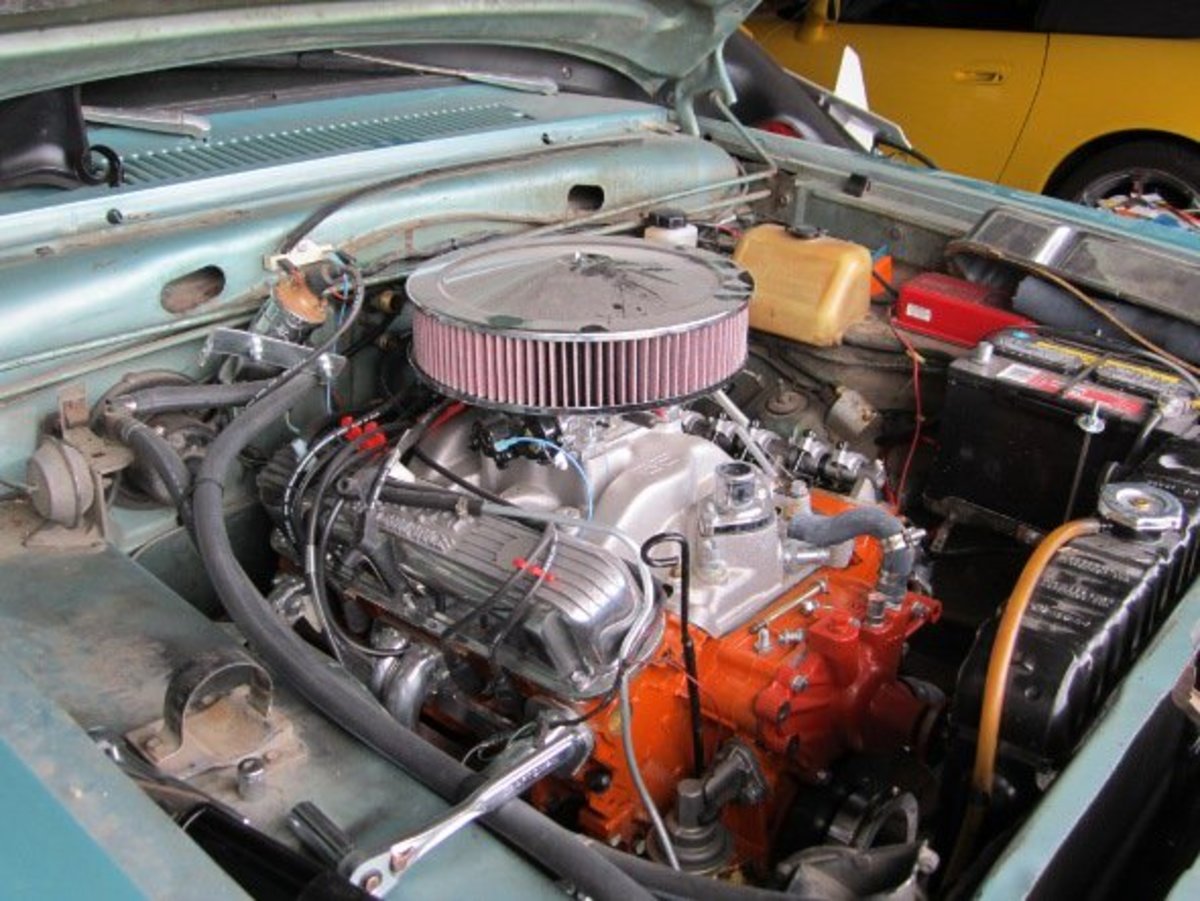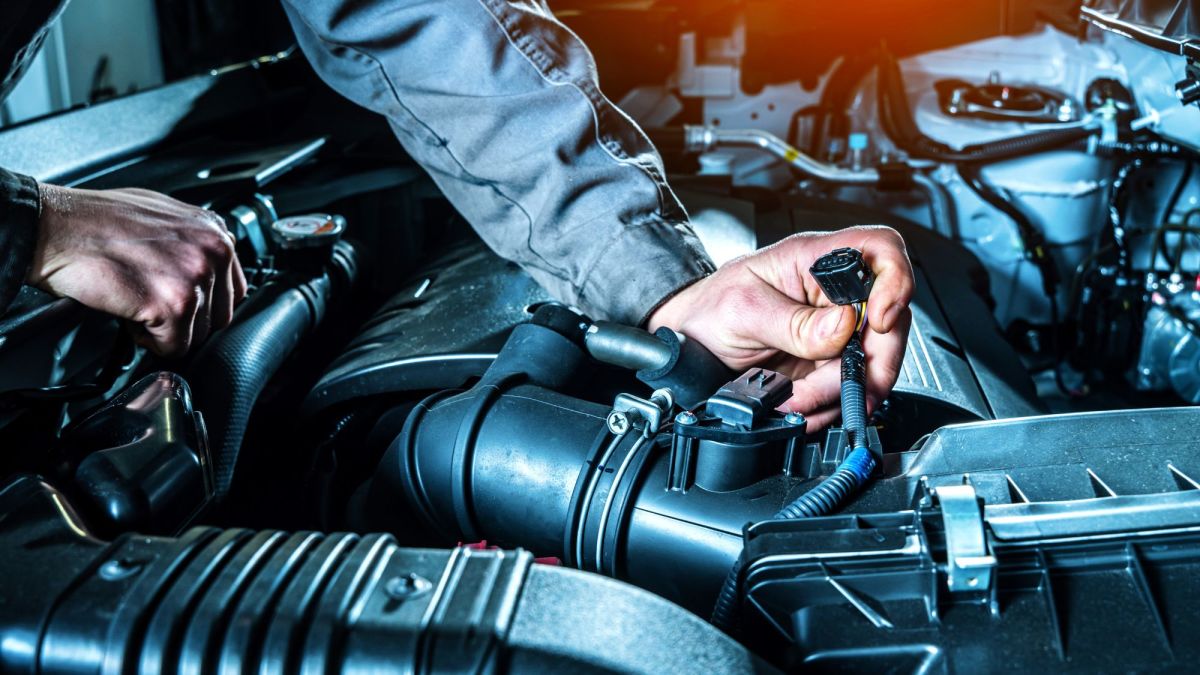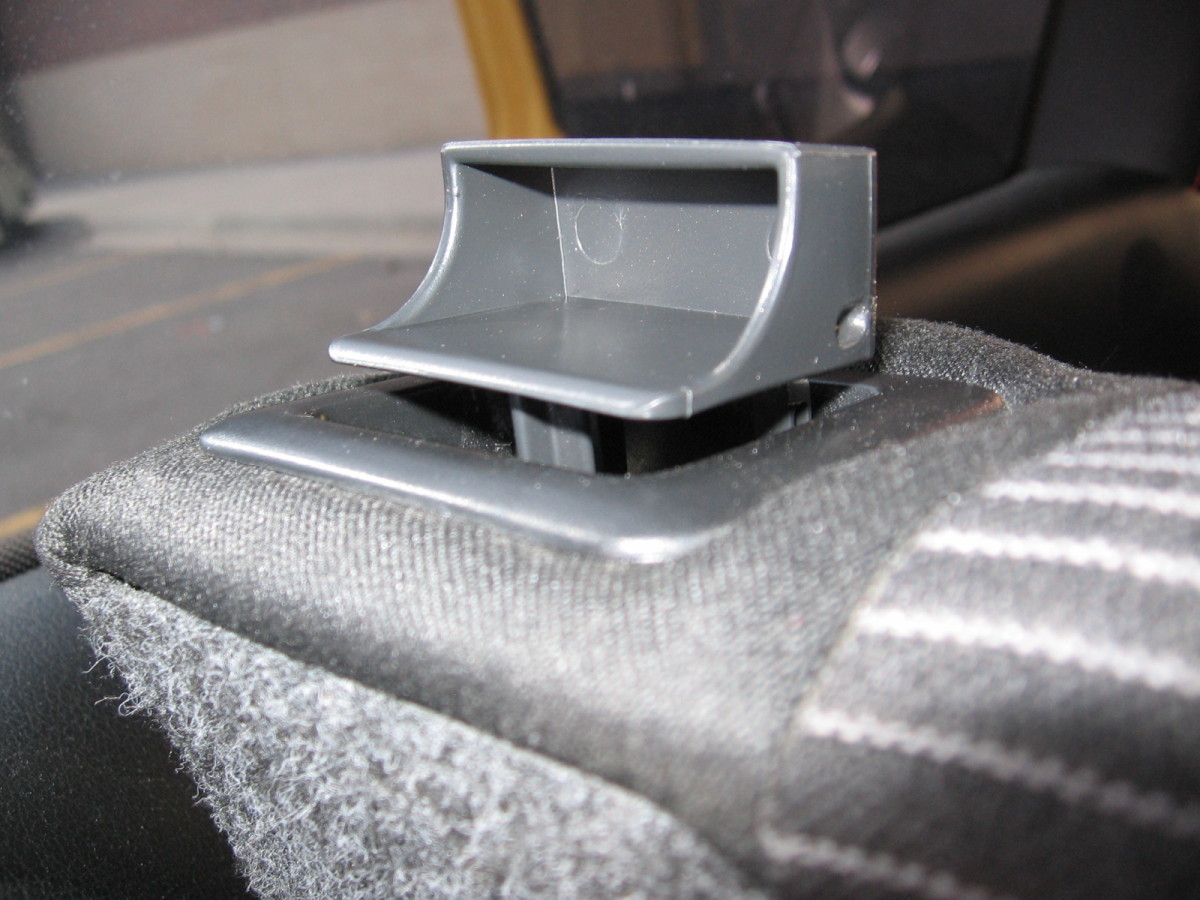Clean & Green Oil Disposal: How to Change Your Oil & Recycle Instead of Disposing Of It
Increase the Life Span of Your Car
Oil is the ‘blood' that gives life to your car engine. Oil is as important as other fluids: gas and water; but it is also the most critical because it can cause major damages to your car in just a short time when disregarded. The quality and the quantity of your car oil are never negotiable. Use the oil brand recommended by the car manufacturer. If the brand is not available, just be sure that oil viscosity is stated in the owner's manual.
Here are 2 ways of taking good care of your car:
- Check oil level every week.
- Change oil regularly.
To keep your car in good running condition, change your car's oil and filter as regular maintenance.
DO NOT neglect your car oil to avoid D.O.A. emergencies. The term ‘dead-on-arrival' is sometimes used by garage mechanics when your car's engine has been damaged beyond repair.
What is Motor Oil?
Motor oil, also called car oil or engine oil, is a thick and sleek liquid that lubricates the moving internal parts in combustion engines. Aside from being a lubricant, motor oil is also a cleaner, a corrosion inhibitor, a sealer and a cooler. Most motor oils are obtained from petroleum.
Mineral motor oil and synthetic motor oil are the common types of motor oil.
How to Check Oil
- Remove the engine oil dipstick from its small tube. Usually, this dipstick has a big and colored looped handle.
- Wipe the dipstick with a clean rag. Look for the marks that indicate ‘full' or ‘low' levels.
- Insert back the full length of dipstick into its small tube. Remove again and examine the level of ‘oiled' part of the dipstick. If low level, add enough oil to bring level to full mark.
- To add oil:
- locate screw cap with illustration on top of engine,
- remove screw cap,
- pour oil in small amounts and check level after each addition.
Best Time to Change Oil
How to Check Oil Level
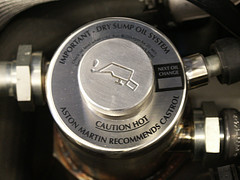
Do you still believe in the ‘3,000 mile myth'? A research by California Integrated Waste Management Board (CIWMB) had shown that more than half of Californian drivers change their car oil without following the car maker recommendations. These car owners still believe in the ‘3,000 mile myth', which means having a routine oil change at every 3,000 miles with complete disregard to what car manufacturer recommends.
Modern car engines require oil change at 5,000 miles and higher. The schedule for oil change in the owner's manual is based on the type of driving done. Following the automaker advice will save the environment and money, too. Whenever in doubt, contact the car dealer or a qualified local mechanic.
You might want to visit the owner's manual online.
2 Types of Driving Conditions:
- normal service - normal driving techniques are obviously the exact opposite to severe service driving condition.
- severe service


Severe Service Driving Conditions:
- Frequent short trips in less than 5 miles or 8 kilometers (under normal weather condition)
- Frequent short trips in less than 10 miles or 16 kilometers, with engine not completely warmed up (under freezing weather condition)
- Always starting and stopping the car engine
- Driving in dusty and salty roads
- Car engine is running but idle for long periods
- Used to towing other vehicles (or have a carrier installed on top of car, as in a camper)
- Driving in high speed frequently
- Driving on uneven surfaces (rough & muddy roads)
- Used on desert operations
- Used during cold and freezing climates
- Used as commercial service
- Driving in heavy traffic (stop and go driving, especially during ‘rush hour')
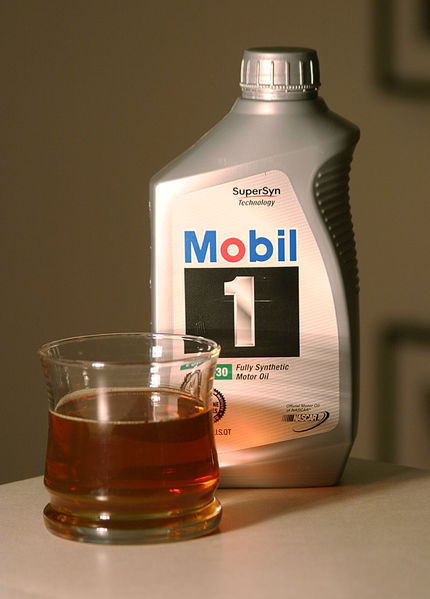
Facts about Synthetic Motor Oil:
- performs better during extreme cold conditions because it does thicken when cool;
- can possibly save a bit of gas and engine wear;
- do not fix worn out car engines, so start using synthetic oil only in vehicle with good running condition;
- should have seal of approval from API (American Petroleum Institute);
- is considered as a luxury and not a money-saver;
- with proper viscosity, can possibly increase mileage interval between oil change maintenance;
- does not require any special oil filter; and
- has chemical contents compatible with plain motor oil (thus, synthetic oil and plain motor oil can be mixed together).
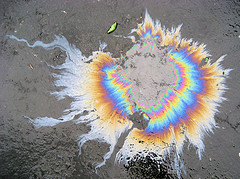
Do you know that a gallon of used oil is more than enough to contaminate a million gallons of water?
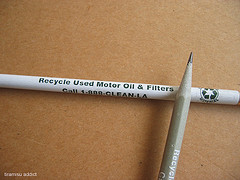
Recycle Your Used Oil!
Because used oil is highly hazardous to the environment, improper disposal of used oil has been made illegal. But despite the 6-figure fine penalty, many people are still irresponsibly indifferent to used oil recycling campaigns. In California alone, a rough estimate of 153 million gallons of used oil is being emitted each year; but only about 60 percent of this is being recycled. The missing 90 million gallons of used oil is probably polluting other parts of the state.
Used oil is not soluble. It is loaded with heavy metals and toxins, which are deadly pollutants to land and water, and stay there for a long time.
DO NOT discard as regular trash, pour into the ground or drain pipe. Bring your used oil to the local environmental resource agency or recycling centers. Some garages accept used oil because they use it to fuel their heaters.
Recycling Used Oil & Filter
Tools and Things You'll Need:
- 3/8-drive socket set
- combination wrench set
- oil filter wrench
- container to catch oil - pan or basin
- empty one-gallon milk containers with screw-on lids
- a couple of wide-mouthed funnel
- plastic bag with zip-lock
- pair of working gloves - not latex rubber but of nitrile or similar material
- clean rags
- old newspapers
- old working clothes
- old baseball cap - to protect long hair
- new oil filter
- new motor oil - use recommended grade, amount and brand
- new sealing washer for drain plug
- factory jack
- pair of jack stands
- chocks or bricks - to block car wheel
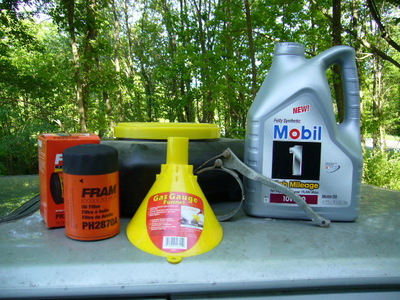
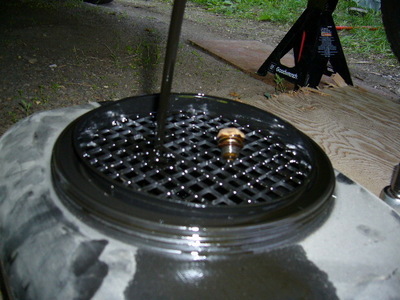
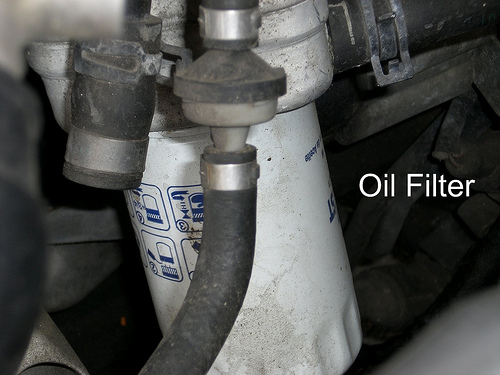
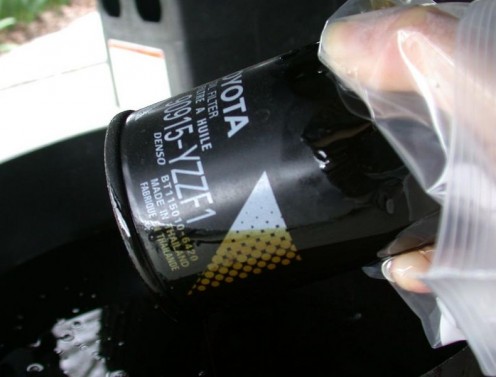
Steps on How to Change Your Car Oil – Part 1
- Important: choose a safe area with level and concrete ground.
- Gather all the materials you will need.
- Drive the car around the neighborhood, just far enough to warm the engine. Warm oil is thinner and easier to drain out.
- Park the car on the chosen area. Block the front and behind of one wheel. Use the jack to raise it up from the ground.
- Place each jack stand on opposite sides of the factory jack, right under the length of heavy duty frame underneath the car. Watch as you lower the jack until car is safely positioned on the jack stands.
- Raise the hood of the car and remove the oil filler cap on top of engine. Oil drains faster when air can flow in.
- Spread old newspapers or old plywood sheet to avoid oil stains on driveway or garage. Place the recycle container or oil catch basin right under the oil drain plug.
- Look for the drain plug on the bottom of the oil pan. Normally, it is located at the back underside of the car and angled down. Warning: be sure that the engine is just warm, not hot!
- Using a wrench with right size, carefully turn the plug counter-clockwise. Wrap your hand with a clean rag when removing the plug, so that oil will not flow down to your arm.
- Let the oil drain out into the used oil container.
- Locate the oil filter. Use the oil filter wrench to ‘choke' the filter counter-clockwise and give a small tug just to loosen.
- Slip your hand inside-out a plastic bag with zip-lock and hold the oil filter. Carefully turn the filter to remove. DO NOT tip off because it might have hot oil in it. Pour the contents into the drain pan and zip the plastic bag with the filter in it. Set aside for recycling.
- Take a 30-minute break to give remaining oil enough dripping time.
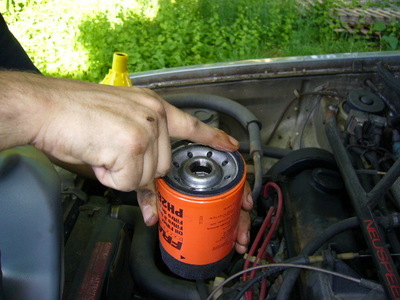
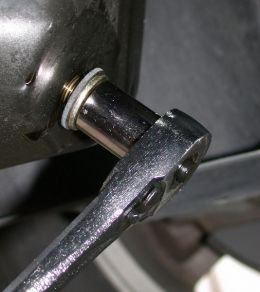
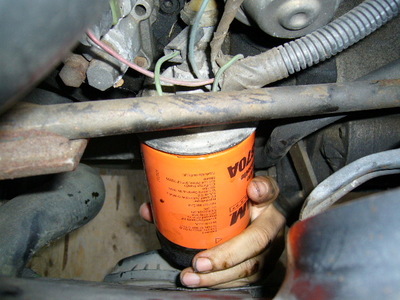
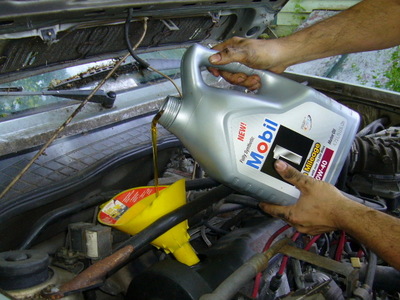
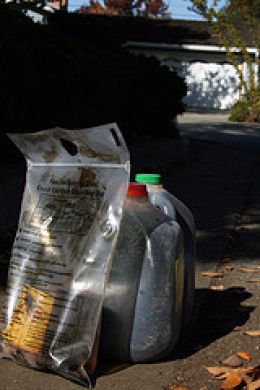
Steps on How to Change Your Car Oil – Part 2
- Wipe the drain plug with clean rag. Put the new sealing washer in place. Screw the drain plug back into its hole. Turn plug with use of wrench until snug and not tight.
- Using the extra funnel, pour used oil from drain pan into milk containers. Prop both the container and pan against some support to let oil continue dripping.
- Get the new oil filter. Use your finger to smear a bit of oil all over the rubber gasket, which is at the bottom of oil filter. Set aside.
- Wipe a clean rag on the round metal circle where the oil filter fits.
- Pour some new oil into the oil filter. If it is mounted vertically, fill it up to three-fourths. If it is angled, pour enough oil to saturate the filter media inside.
- Hold the oil filter firmly and screw onto its post. Turn it by hand until finger-tight. Choke it again with the oil filter wrench and slowly tighten up to one-half or three-fourth of a turn only.
- Repeat the jacking up procedure to remove the jack stands from beneath the car.
- Place the clean funnel into oil filler hole. Pour the right amount of new oil, as per automaker's recommendation.
- Check oil level. Add more, little by little, until you reach the right level.
- Screw on the oil filler cap securely.
- Start the engine and let it run idle for 5 minutes. Look underneath the car for leaks.
- Clean up while engine is running idle. Fold the newspapers neatly and put into the trash can. Wipe all your tools with clean rags and put back into place.
- Seal the milk bottles filled with used oil and put inside a cardboard box, together with the used oil filter and the empty motor oil containers. Place them on level surface of car to avoid spilling during transport.
- Take a last check for leaks at the drain plug. Then drive to the nearest oil recycling center to drop off your used oil and filter.
More Helpful Tips on Do-It-Yourself Car Oil Change:
- Keep receipts of your change oil purchases, as proof of good car maintenance to keep warranty coverage.
- The bolt size varies from car to car and it is in the 13-30mm range.
- All Mercedes have a screwed-on plastic shield over the oil pan. While pick-ups and SUV's have steel plate shield.
- If you accidentally dropped the plug in the oil, use a magnet to find it.
- Some vehicles have oil filter in cartridge, rather than the simple oil filter. You have to open the cap of cartridge or built-in reservoir to take out the oil filter itself.
- Make sure that the rubber gasket ring of used oil filter comes off, too. Otherwise, the new oil filter will not seal and will have a leak.
- Do not overfill oil to engine to avoid foaming or spilling.
- Pour new oil with spout slightly tipped to avoid bubbling.
- Buy an oil drain valve to replace your oil drain bolt for easy removal.
- Be extra careful with the oil inlet and the transmission inlet.
- Do not leave the used oil in plastic containers exposed to sunlight for long.
- Park the car over a trench or ditch if you do not have jack stands.
- Do not use wrong size of wrench on the drain plug bolt to avoid ‘smoothing' the corners of bolt.
- Do not over-tighten new oil filter.
- Foreign cars need metric set of socket wrench.
- Choose oil filter with non-slip coating.
- Invest on the double articulated oil filter wrench.
- Always check the owner's manual on oil maintenance schedule, oil weight selection, type of oil, correct oil viscosity, additives, and on any matter concerning your car.
How To Change Engine Oil & Filter - Part 1 (featuring 67 Camaro)
How To Change Engine Oil & Filter - Part 2 (featuring 67 Camaro)
How to Change Your Motorcycle Oil - Part 1
How to Change Your Motorcycle Oil - Part 2
How to Change Your Motorcycle Oil - Part 3
Related Links:
- Oil Change - How to Do Your Own Oil Change - Changing Your Engine Oil
Learn all the basic steps on car oil changing with the clear and easy to follow instructions on this site. It's like taking a crash course on automotive repair, majoring in car oil change! Lots of precautionary pointers, too. - How To Change Your Motor Oil | eHow.com
Gives a very brief description of every steps to follow on how to change your car oil. Also contains several helpful tips and important notes on proper car maintenance. - How to Change the Oil in Your Car in 12 Steps (with pictures ...
Get a comprehensive step-by-step directions of the do-it-yourself guide to change your car oil. Almost everything is discussed thoroughly, with much emphasis on the correct procedure and right selection of oil type and tools to be used. - Castrol India - How to change your oil
Discover a much-simplified steps of changing your car oil. It also highlighted the pros of doing the car oil change yourself through saving money. Try skipping the visit to your mechanic on your next oil change. - Sustainable Choices -- On the Road: Change oil and filters regularly
Find tips and advices on the issues of car oil change and recycling used oil plus old oil filters. There's also suggestion of changing your air filter as well, every time you change oil. - Saturday Mechanic: Changing Your Oil And Filter - MSN Lifestyle: Men
You have your change oil money when you drove off to the local garage but you're dismayed by what you saw. A long line of cars also needing and wanting an oil change. Why not change the car oil myself? you decided and headed back home to do it.


